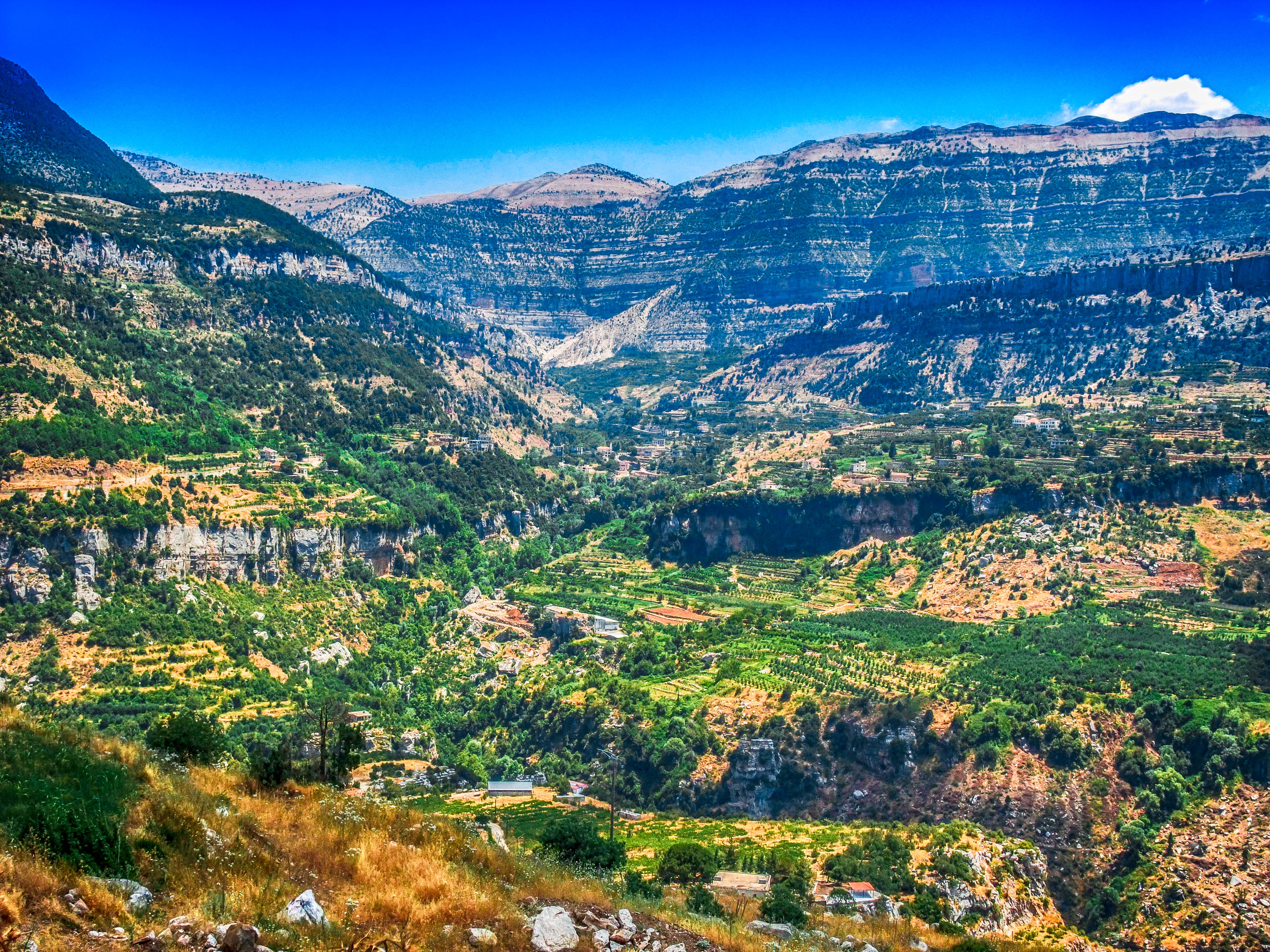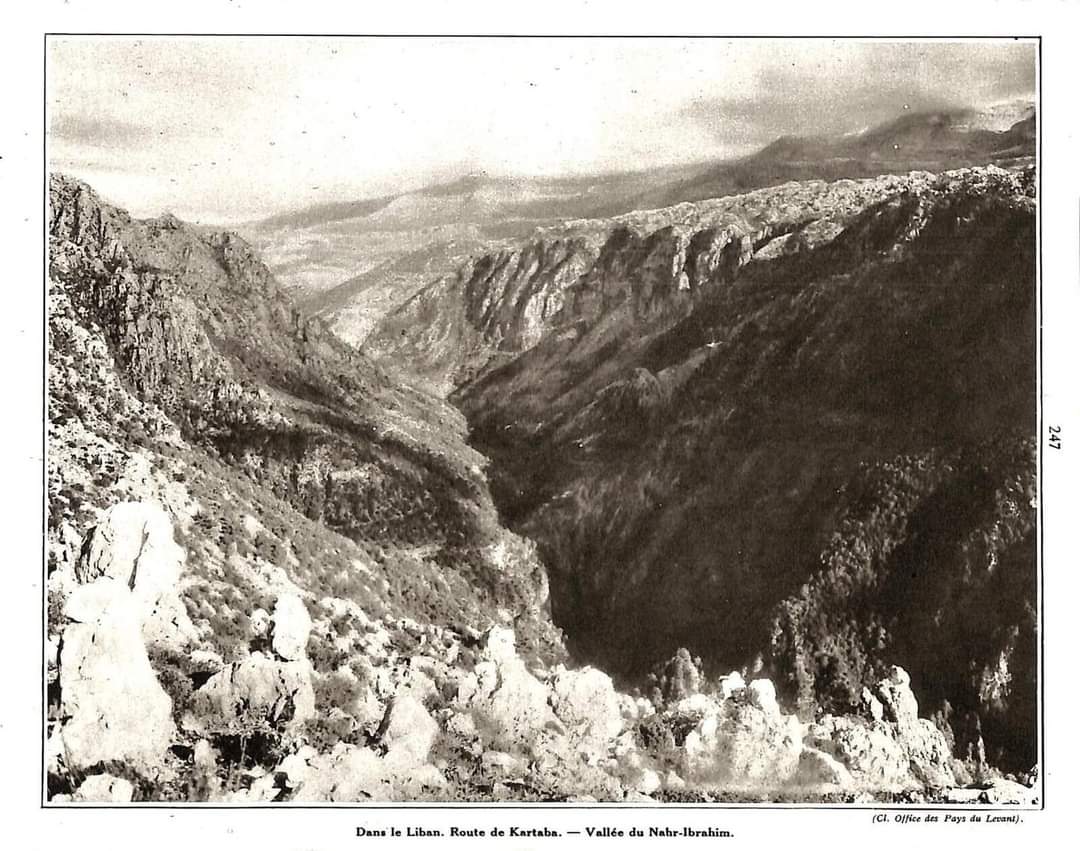|
Akoura
Aqoura ( ar, عاقورة, also spelled ''Aaqoura'', "Akoura") is a mountainous village in the Byblos District of Keserwan-Jbeil Governorate, Lebanon. It is 68 kilometers north of Beirut. Aqoura has an average elevation of 1,600 meters above sea level and a total land area of around 10.5 square kilometers . Aqoura's inhabitants are Maronite Catholics. By area, Aaqoura is the largest village belonging to its citizens (not emirate lands) in Lebanon. By voting, it is the third largest town in the Byblos District, along with the district capital Byblos and Qartaba. Maronite The Maronites ( ar, الموارنة; syr, ܡܖ̈ܘܢܝܐ) are a Christian ethnoreligious group native to the Eastern Mediterranean and Levant region of the Middle East, whose members traditionally belong to the Maronite Church, with the larges ...s emerged from Aaqoura in the fourth century when Saint Maroun's disciple Ibrahim El Korchy started preaching and converting pagans to the Christian faith in the ... [...More Info...] [...Related Items...] OR: [Wikipedia] [Google] [Baidu] |
Lebanon
Lebanon ( , ar, لُبْنَان, translit=lubnān, ), officially the Republic of Lebanon () or the Lebanese Republic, is a country in Western Asia. It is located between Syria to the north and east and Israel to the south, while Cyprus lies to its west across the Mediterranean Sea; its location at the crossroads of the Mediterranean Basin and the Arabian hinterland has contributed to its rich history and shaped a cultural identity of religious diversity. It is part of the Levant region of the Middle East. Lebanon is home to roughly six million people and covers an area of , making it the second smallest country in continental Asia. The official language of the state is Arabic, while French is also formally recognized; the Lebanese dialect of Arabic is used alongside Modern Standard Arabic throughout the country. The earliest evidence of civilization in Lebanon dates back over 7000 years, predating recorded history. Modern-day Lebanon was home to the Phoenicians, a m ... [...More Info...] [...Related Items...] OR: [Wikipedia] [Google] [Baidu] |
Governorates Of Lebanon
Lebanon is divided into nine governorates (''muhafazah''). Each governorate is headed by a governor (''muhafiz''): All of the governorates except for Beirut and Akkar are divided into districts, which are further subdivided into municipalities. The newest governorate is Keserwan-Jbeil, which was gazetted on 7 September 2017 but whose first governor, Pauline Deeb, was not appointed until 2020. Implementation of the next most recently created governorates, Akkar and Baalbek-Hermel, also remains ongoing since the appointment of their first governors in 2014. See also * Politics of Lebanon References External links Lebanon 1 Governorates, Lebanon Governorates A governorate is an administrative division of a state. It is headed by a governor. As English-speaking nations tend to call regions administered by governors either states or provinces, the term ''governorate'' is often used in translation from ... Subdivisions of Lebanon {{Lebanon-geo-stub ... [...More Info...] [...Related Items...] OR: [Wikipedia] [Google] [Baidu] |
Keserwan-Jbeil Governorate
Keserwan-Jbeil ( ar, كسروان - جبيل) is the most recently created governorate of Lebanon. It consists of the districts of Jbeil and Keserwan. Keserwan-Jbeil covers an area of and is bounded by the North Governorate to the north, the Baalbek-Hermel Governorate to the east, the Mount Lebanon Governorate to the south, and the Mediterranean Sea to the west. The capital is at Jounieh. As of the end of 2017, the combined population of the districts of Jbeil and Keserwan was estimated to be 282,222. Maronites comprise a large majority of the population in the governorate, while Shiites are the next largest confessional group. In the 2018 Lebanese general election, Jbeil and Keserwan formed the Mount Lebanon I electoral district which was allotted eight parliamentary seats in total, seven Maronite and one Shia. A proposal to separate the districts of Jbeil and Keserwan from Mount Lebanon Governorate was first submitted to Parliament in 2003. The new governorate was finally ... [...More Info...] [...Related Items...] OR: [Wikipedia] [Google] [Baidu] |
Districts Of Lebanon
The nine governorates of Lebanon are subdivided into 25 districts (''Aqdya'', singular''qadaa''). Beirut Governorate is not subdivided into districts, and Akkar Governorate comprises a single district. The districts are further divided into municipalities. List of districts Capitals (مراكز) of the governorates and districts are indicated in parentheses. #Akkar Governorate ( Halba) #*Akkar ( Halba) #Baalbek-Hermel Governorate ( Baalbek) #* Baalbek ( Baalbek) #*Hermel (Hermel) # Beirut Governorate (Beirut) #Beqaa Governorate (Zahlé) #*Rashaya (Rashaya) #* Western Beqaa (Joub Jannine - winter Saghbine - summer) #* Zahle (Zahlé) # Mount Lebanon Governorate (Baabda) #*Byblos (Byblos) #* Keserwan ( Jounieh) #*Aley (Aley) #*Baabda (Baabda) #*Chouf (Beiteddine) #*Matn/Metn (Jdeideh) #Nabatieh Governorate (Nabatieh) #*Bint Jbeil (Bint Jbeil) #*Hasbaya (Hasbaya) #*Marjeyoun (Marjeyoun) #*Nabatieh (Nabatieh) # North Governorate (Tripoli) #*Batroun (Batroun) #*Bsharri (Bsharri) #* ... [...More Info...] [...Related Items...] OR: [Wikipedia] [Google] [Baidu] |
Byblos District
Byblos District ( ar, قضاء جبيل; transliteration: ''Qadaa' Jbeil''), also called the Jbeil District (''Jbeil'' is Lebanese Arabic for "Byblos"; standard Arabic ''Jubail''), is a district (''qadaa'') of the Keserwan-Jbeil Governorate of Lebanon. It is located to the northeast of Lebanon's capital Beirut. The capital is Byblos. The rivers of al-Madfoun and Nahr Ibrahim form the district's natural northern and southern borders respectively, with the Mediterranean Sea bordering it from the west and Mount Lebanon from the east, separating it from the adjacent district of Baalbek in the Beqaa Valley. Demographics The district's population is predominantly Maronite Catholic, followed by a Shia Muslim minority community. The largest towns of the district are predominantly inhabited by Maronites; they are Byblos, Qartaba, Aqoura and Amsheet. Most Shia Muslims live in the valley of the Ibrahim River, particularly in the villages of Almat, Ras Osta, Hjoula, Bichtlida, Lassa, and ... [...More Info...] [...Related Items...] OR: [Wikipedia] [Google] [Baidu] |
Beirut
Beirut, french: Beyrouth is the capital and largest city of Lebanon. , Greater Beirut has a population of 2.5 million, which makes it the third-largest city in the Levant region. The city is situated on a peninsula at the midpoint of Lebanon's Mediterranean coast. Beirut has been inhabited for more than 5,000 years, and was one of Phoenicia's most prominent city states, making it one of the oldest cities in the world (see Berytus). The first historical mention of Beirut is found in the Amarna letters from the New Kingdom of Egypt, which date to the 14th century BC. Beirut is Lebanon's seat of government and plays a central role in the Lebanese economy, with many banks and corporations based in the city. Beirut is an important seaport for the country and region, and rated a Beta + World City by the Globalization and World Cities Research Network. Beirut was severely damaged by the Lebanese Civil War, the 2006 Lebanon War, and the 2020 massive explosion in the ... [...More Info...] [...Related Items...] OR: [Wikipedia] [Google] [Baidu] |
Maronites
The Maronites ( ar, الموارنة; syr, ܡܖ̈ܘܢܝܐ) are a Christian ethnoreligious group native to the Eastern Mediterranean and Levant region of the Middle East, whose members traditionally belong to the Maronite Church, with the largest concentration long residing near Mount Lebanon in modern Lebanon. The Maronite Church is an Eastern Catholic particular church in full communion with the Pope and the rest of the Catholic Church, whose membership also includes non-ethnic Maronites. The Maronites derive their name from the Syriac Christian saint Maron, some of whose followers migrated to the area of Mount Lebanon from their previous place of residence around the area of Antioch, and established the nucleus of the Antiochene Syriac Maronite Church. Christianity in Lebanon has a long and continuous history. Biblical scriptures purport that Peter and Paul evangelized the Phoenicians, whom they affiliated to the ancient patriarchate of Antioch. The spread of Christianity in ... [...More Info...] [...Related Items...] OR: [Wikipedia] [Google] [Baidu] |
Byblos
Byblos ( ; gr, Βύβλος), also known as Jbeil or Jubayl ( ar, جُبَيْل, Jubayl, locally ; phn, 𐤂𐤁𐤋, , probably ), is a city in the Keserwan-Jbeil Governorate of Lebanon. It is believed to have been first occupied between 8800 and 7000BC and continuously inhabited since 5000BC, making it one of the oldest continuously inhabited cities in the world. During its history, Byblos was part of numerous civilizations, including Egyptian, Phoenician, Assyrian, Persian, Hellenistic, Roman, Fatimid, Genoese, Mamluk and Ottoman. The city is a UNESCO World Heritage Site. It was in ancient Byblos that the Phoenician alphabet, likely the ancestor of the Greek, Latin and all other Western alphabets, was developed. Etymology Byblos appears as ''Kebny'' in Egyptian hieroglyphic records going back to the 4th-dynasty pharaoh Sneferu (BC) and as () in the Akkadian cuneiform Amarna letters to the 18th-dynasty pharaohs and IV. In the 1stmillenniumBC, its name appeared ... [...More Info...] [...Related Items...] OR: [Wikipedia] [Google] [Baidu] |
Qartaba
Qartaba ( ar, قرطبا, also spelled ''Kartaba'' or ''Artaba'') is a mountainous town in the Byblos District of the Keserwan-Jbeil Governorate, Lebanon. It is located 57 kilometers north Beirut on the mountains above Byblos at an average altitude of 1,250 meters. Qartaba is surrounded by olive groves, apple orchards, and vineyards. Etymology In Syriac, Qartaba means either a good place (ܟܘܪ ܛܒܐ) or nice chillness (ܩܪܛܒܐ) reflecting its good, curing, and balanced weather. The town is often referred to as Byblos' Bride. History Qartaba was once considered an important village in the Byblos highland, a trade point for surrounding villages. Silk manufacturing flourished and in 1918, seven factories employed more than 500 people and much of the silk was exported to Lyon, France. Archeology A column carved into the facade of two temples, with statues of members of an elite Roman family was discovered in 1940 in Qartaba, near the Saint Sarkis and Bacchus Monastery. It i ... [...More Info...] [...Related Items...] OR: [Wikipedia] [Google] [Baidu] |
Maronite
The Maronites ( ar, الموارنة; syr, ܡܖ̈ܘܢܝܐ) are a Christian ethnoreligious group native to the Eastern Mediterranean and Levant region of the Middle East, whose members traditionally belong to the Maronite Church, with the largest concentration long residing near Mount Lebanon in modern Lebanon. The Maronite Church is an Eastern Catholic particular church in full communion with the Pope and the rest of the Catholic Church, whose membership also includes non-ethnic Maronites. The Maronites derive their name from the Syriac Christian saint Maron, some of whose followers migrated to the area of Mount Lebanon from their previous place of residence around the area of Antioch, and established the nucleus of the Antiochene Syriac Maronite Church. Christianity in Lebanon has a long and continuous history. Biblical scriptures purport that Peter and Paul evangelized the Phoenicians, whom they affiliated to the ancient patriarchate of Antioch. The spread of Christianity ... [...More Info...] [...Related Items...] OR: [Wikipedia] [Google] [Baidu] |
Populated Places In Byblos District
Population typically refers to the number of people in a single area, whether it be a city or town, region, country, continent, or the world. Governments typically quantify the size of the resident population within their jurisdiction using a census, a process of collecting, analysing, compiling, and publishing data regarding a population. Perspectives of various disciplines Social sciences In sociology and population geography, population refers to a group of human beings with some predefined criterion in common, such as location, race, ethnicity, nationality, or religion. Demography is a social science which entails the statistical study of populations. Ecology In ecology, a population is a group of organisms of the same species who inhabit the same particular geographical area and are capable of interbreeding. The area of a sexual population is the area where inter-breeding is possible between any pair within the area and more probable than cross-breeding with ind ... [...More Info...] [...Related Items...] OR: [Wikipedia] [Google] [Baidu] |
.png)






